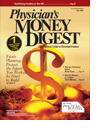Hunt for Returns in a Fickle Stock Market
Oil prices ease, a barrel of crude drops $1.53,and the Dow surges 107 points. GeneralMotors issues a profit warning, and the Dowplunges 112 points. Federal Reserve ChairmanAlan Greenspan raises a key interest rate, and theDow drops 95 points on inflation worries. Does thissound familiar? Do you ever go home after an exhaustingday at the practice, turn on your computer, franticallylook up your 401(k) balance on the Internet, throw upyour hands, and become despondent?
With that said, where does one go to obtain a decentrate of return on their investments? Right now, manypeople are not looking for the hottest stock in which toinvest but are curbing their expectations and seekingattractive yields and safety.
Common Denominator
Shaken by the stock market bubble that occurred afew years back, investors dashed for a safe haven, whichthey found in bonds. As a result, bond prices were drivenup and yields came down. Now, faced with thethreat of higher interest rates and rising inflation, yieldsare beginning to head up, driving bond prices down. Sowe are now faced with the threat of bond income beingoffset by bond price depreciation.
How about CDs? True, they are FDIC-insured andoffer yields of approximately 3.5% to 4.5%. However,one problem exists: higher rates are a function of committingyour capital for a longer period of time. If youshould need to access that money prior to the CD maturing,penalties will be incurred.
So where can an investor find an attractive yield oninvestment, some safety, the likelihood of increases in dividendsin the future, and the possibility of double-digitreturns? For less risk-averse investors, there are suchvehicles as real estate investment trusts, mutual funds thatinvest in the fixed-income securities of emerging markets,and Canadian energy-related investment trusts, whichare becoming increasingly popular.
Dividend Payoff
Dow Theory Forecasts
However, for those who are a bit more risk-averse,investing in dividend-paying stocks is probably a muchsafer bet due to the Jobs and Growth Tax ReliefReconciliation Act of 2003. The Act cut the tax rate onqualified dividend income from as high as 35% to 15%.This tax cut expires in 2008, but there is a good chancethat President Bush will succeed in pushing to make thiscut permanent. In the past, dividend-yielding stocks haveoutperformed nondividend-yielding stocks in priceappreciation. In fact, in 2004, according to the newsletter, the average dividend-payingstock outperformed the average nondividend-payingstock by nearly five percentage points.
Noteworthy difference:
So, if you are seeking dividend income, moderategrowth, and have a tendency to be risk averse, search outdividend-paying securities that have a consistent historyof dividend payout increases, stable earnings, good cashflow, and strong balance sheets. If individual securitiespresent too much risk for adequate diversification, thenyou may want to look at mutual funds or exchange-tradedfunds (ETFs) that are based on an underlying index ofhigher yielding securities. TheETF option is more tax efficient and has a lower expenseratio than the mutual fund option.
and his partner, Harris L.
Kerker, are principals of the Asset Planning Group
in Miami, Fla, specializing in investment, retirement,
and estate planning. Mr. Kosky teaches corporate
finance in the Saturday Executive and
Health Care Executive MBA Programs at the
University of Miami. He welcomes questions or
comments at 800-953-5508, or visit www.assetplanning.net.
Thomas R. Kosky
